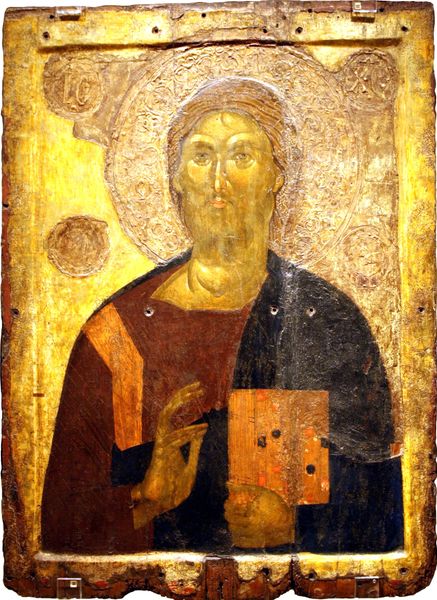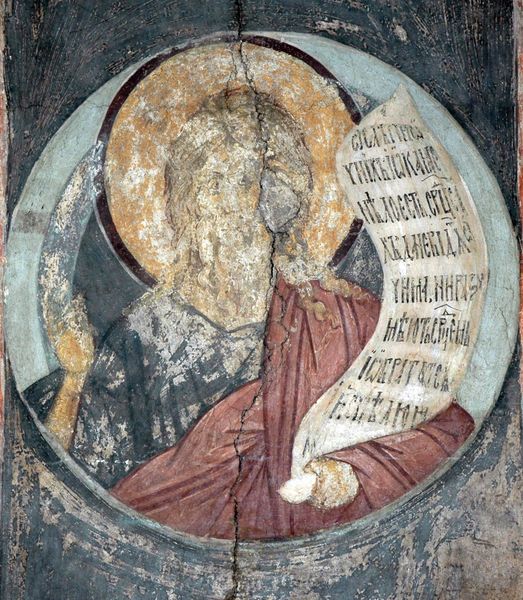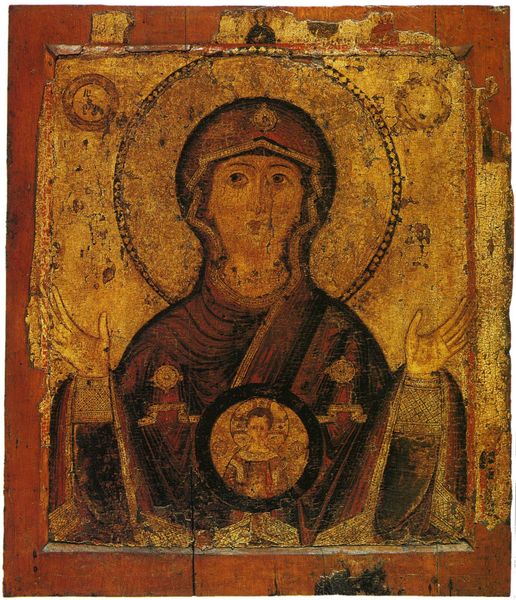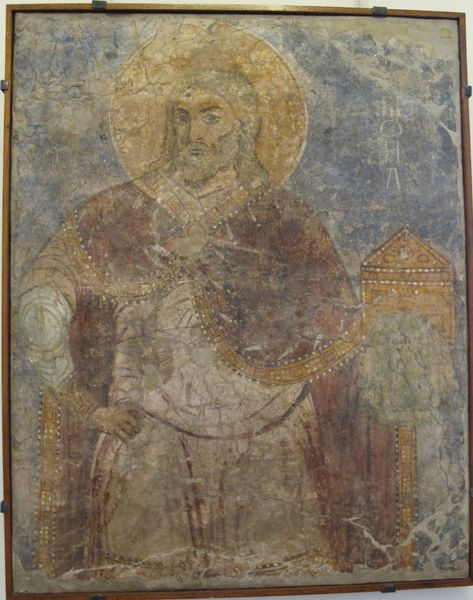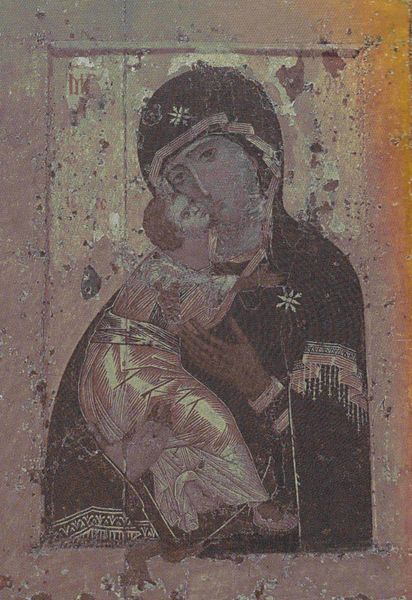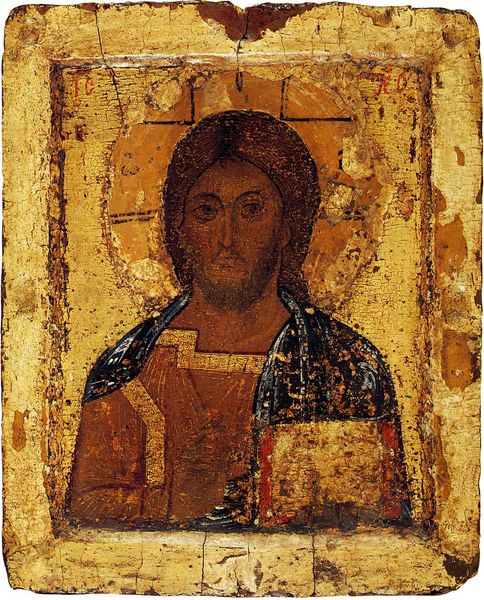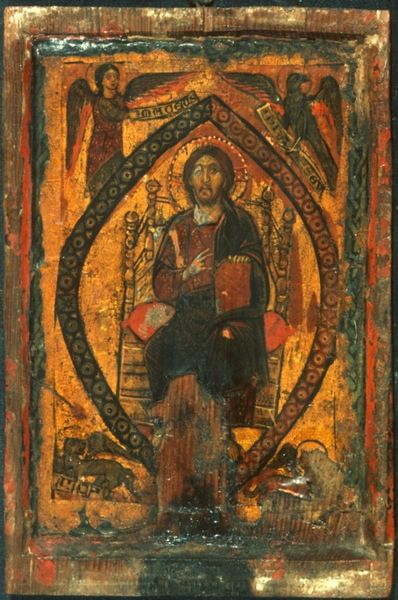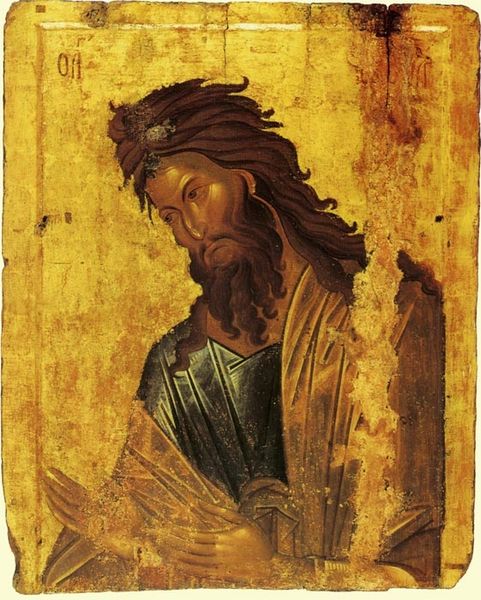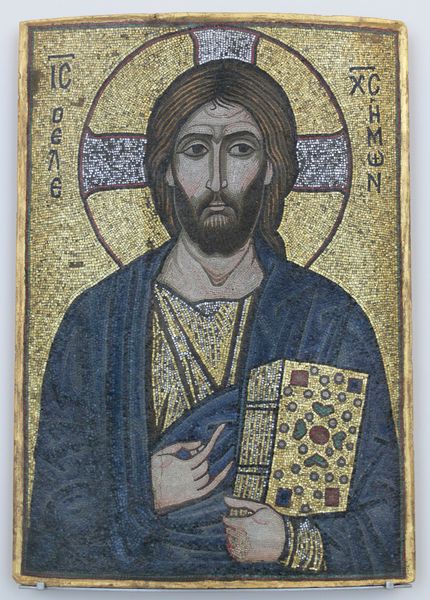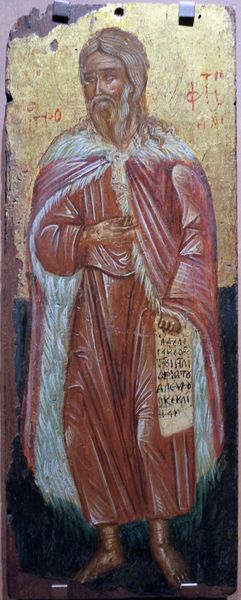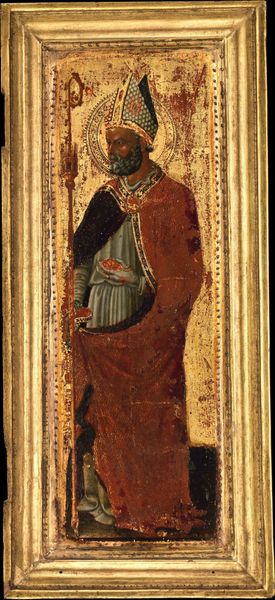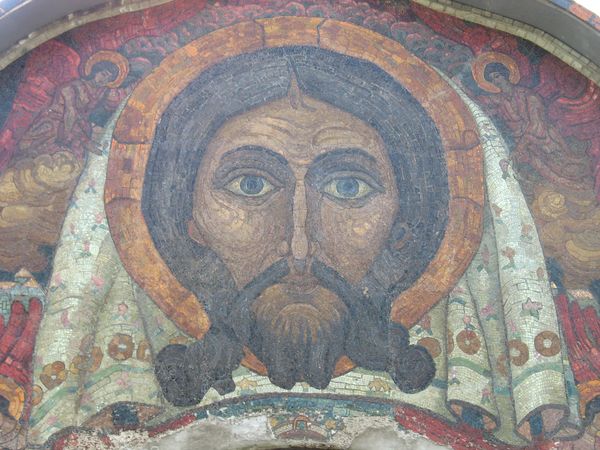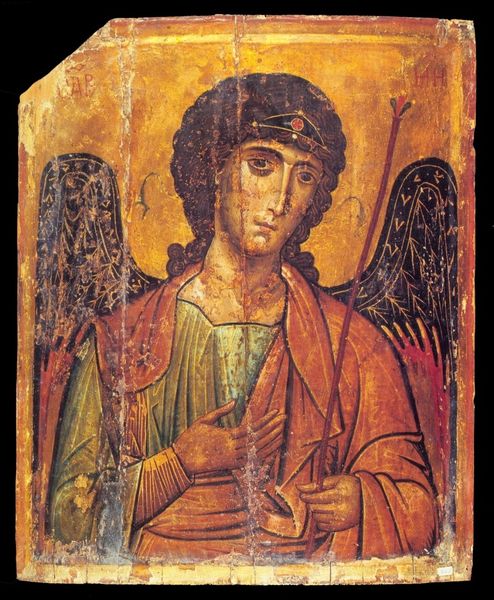
panel, tempera
#
portrait
#
byzantine-art
#
medieval
#
panel
#
tempera
#
figuration
#
oil painting
#
tile art
#
history-painting
Copyright: Orthodox Icons,Fair Use
Curator: Here we have a remarkable panel, "Christ Enthroned," dating back to approximately 1190. It’s tempera on wood and currently held at Saint Catherine's Monastery on Mount Sinai, a site brimming with art historical treasures. Editor: My immediate sense is one of austere authority, but also of profound vulnerability. The flaking paint only amplifies that fragility. The overall feeling is rather severe. Curator: That sense of authority certainly stems from the traditional iconographic program. Note how Christ's right hand is raised in a gesture of blessing or teaching, while his left hand holds a Gospel book. Each element reinforces His divine role. The halo also functions as a solar disk and suggests ultimate power. Editor: It’s interesting you mention that. This representation—of power and divinity—historically excluded and continues to exclude many groups, particularly women, from positions of religious leadership and theological discourse. The representation has real consequences. Curator: But is the exclusion an intrinsic problem of the artwork, or is it more indicative of societal structures and biases, an imperfect interpretation by imperfect systems? I think it also worth emphasizing that these icons offered visual narratives of faith that resonated deeply within largely illiterate societies, allowing a widespread and continuous means of accessing Christian ideology and belief. Editor: I take your point, but I am keen on also critically assessing the icon's original context of power—a structure that persists in many forms today. By critically re-evaluating the image and recognizing that a representation has consequences and historical outcomes is very relevant today when a rise of fundamentalism seems to take us backward rather than forwards. Curator: The gaze itself is pretty striking. I often find it captivating; the artist truly invites a meditative state for those viewing the work, the intention perhaps, towards divine presence and reflection on its message. Editor: Despite the icon's inherent contradictions and the structures of the patriarchy, it seems rather relevant as a prompt and reminder of not giving ground to that oppression of belief that comes about, whether its exclusion or judgemental stance. It really offers to us all ways in which power is understood. Curator: So perhaps, ultimately, both a reminder and an inspiration.
Comments
No comments
Be the first to comment and join the conversation on the ultimate creative platform.
